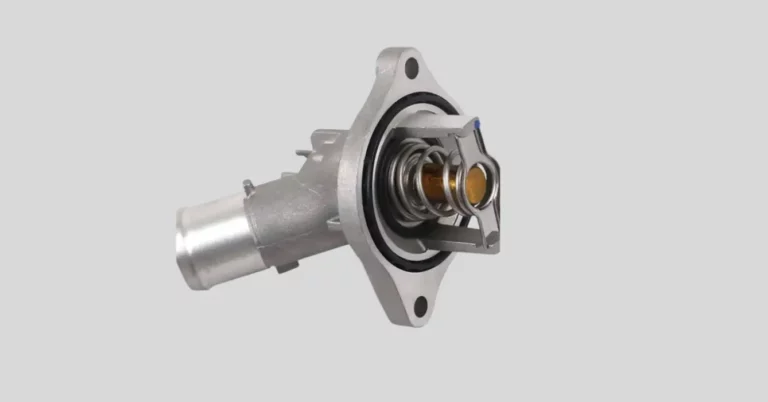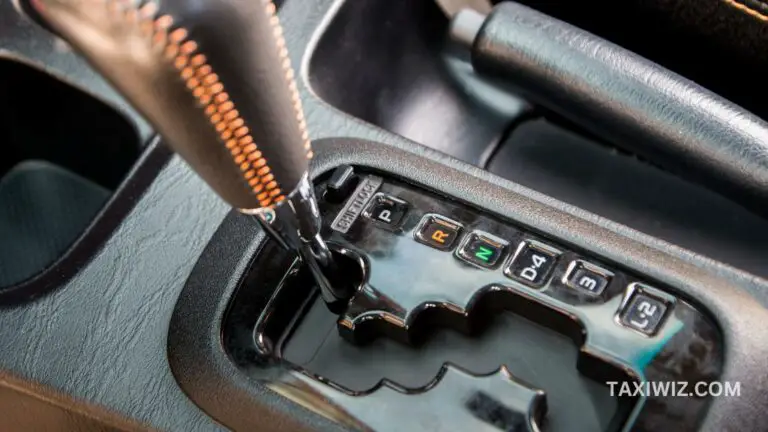Orange Rust on Brake Rotors? – [Try This Easy Fix!]
The formation of orange rust on brake rotors is standard in cars that have been operational for a few years.
However, leaving it unattended for too long can lead to severe complications. Parts that can be corrupted are the wheel chocks, rotors, and outer edges.
Typically, orange rust usually shows up on brake rotors for the following reasons;
- Prolonged exposure to oxidation
- Harsh weather conditions
Our article will explore the reasons that lead to orange rust building up on brake rotors. Furthermore, it will provide tips that can help in quickly removing them and getting the vehicle to optimum performance in no time.

Why Does Orange Rust on Brake Rotors?
Orange rust usually forms on rotors over a long period of time. Typically, this phenomenon happens due to two reasons. Keep on reading to discover how this issue develops because of them.
1. Constant Oxidation Exposure
Cars usually feature brakes that are made of sturdy materials that are able to withstand bumps and rough driving.
However, the use of durable metal also puts it at risk of exposure to oxidation.
Various elements of the environment accelerate the rusting process in brake rotors due to natural or artificial oxidation.
When cars drive through mud or water, there’s a risk that they may enter its interior and influence the rotors.
Oftentimes, the amount of oxygen that enters the car influences the rusting speed of the brake rotor. The rusting process accelerates significantly if too much oxygen enters the vehicle’s interior.
In some cases, oxidation can also be triggered by continuously driving the car. Constantly braking the car causes the brake rotors to generate heat which causes oxidation. Thus, the pace of the component rusting is quickening.
Braking the car also results in the rotor producing brake dust. It’s a mixture of various particles which mostly includes metal and rubber.
Their production is a result of the brake discs and pads wearing out gradually.
Brake dust accumulating on the brake rotor exacerbates the rusting process. Lastly, rusting can also occur faster if rusting salt enters the car’s interior while driving, which accelerates the oxidation process.
2. Influences from Weather
Natural disasters are a huge risk factor for a brake rotor’s health. Even if the car isn’t directly in the line of storms, earthquakes, or harsh winds, exposure to them can cause rusting in the component.
Furthermore, dust particles can influence the rusting process if a vehicle remains idle in a garage for too long. Not applying brake cleaners routinely or letting tiny bits of rust fester can also boost the rusting process.
How to Stop Orange Rust from Accumulating on Brake Rotors?
A rusty brake rotor can be a troublesome experience to deal with as there’s no way to repair it. Moreover, buying a replacement is an extremely expensive endeavor and you will also require the services of a professional mechanic to complete the process.
The best way to deal with orange rust on rotors is by preventing it. Here are some measures you can take from letting it build up on the component.
1. Preventing Road Salt Accumulation
Accumulation of break salt on the brake pads is a common phenomenon while driving on the road. Acid salts create congestion on the brake rotor’s exterior, causing it to gradually become rusty.
Cleaning the wheels regularly can stop the build-up of brake salts in the car. Including it in the car’s regular cleaning routine can keep the vehicle’s rotor spotless. It will also save other car parts from getting damaged.
2. Selecting Proper Parking Conditions
Parking cars in humid climates is essentially an open invitation for rust to build up on the brake rotor. It’s best to avoid keeping your car in open areas that experience heavy rain and snowfall on a yearly basis.
On the other hand, temperature regulation is completely necessary when parking the vehicle in a closed space.
It’s vital that the garage is dry at all times. Moreover, ensure that the thermostat is at a level that doesn’t allow the space to experience high humidity.
3. Choosing the Right Rotors
There are a large variety of rotors that are available nowadays with each model suitable for specific purposes.
Selecting the ones with the coating is the perfect choice for its longevity. Moreover, it’s also shielded from the risks of rusting.
Conducting basic routine cleanup is enough to maintain coated rotors. Using cleaning products on them is more than enough to maintain their quality and performance. Its rust-free feature will save you from a lot of hassle.
4. Conducting Timely Maintenance
Annual servicing is an excellent way to understand a car’s present health. The diagnosis will allow you to notice any orange rust build-up on the brake rotor.
Furthermore, it will also eliminate the existing amounts in the process.
Conducting maintenance through the professional help of a mechanic will ensure the car’s brake rotors are in optimum health consistently. Therefore, it’s a more convenient way of preventing orange rust in your vehicle.
Orange Rust on Brake Rotors – (FAQs)
1. How quickly does rust form in brake rotors?
Orange rust can develop in rotors within 12 hours. Over time, more layers form on the component.
2. What are the risks of using a rusty brake?
Rust developing on the brake is relatively harmless while it’s on the surface level. However, leaving it unattended can lead to it significantly destroying the part.
3. Can rust formation on the brake cause noises?
Rusty brakes initially can feel noisy. However, it stops producing sounds once it’s being used frequently.
Conclusion
There’s no need to panic when you notice orange rust on your car’s brake rotor.
However, failing to clear it quickly can result in a build-up on the component’s interior, which can lead to it getting ruined.
Integrating the rust-clearing process into your car’s cleaning routine can easily ensure that the brake rotors do not get drowned by rust. It’s the perfect approach to keep the component in the best condition.

![Cylinder 2 Misfire After Spark Plug Change –[Causes & Fixes]](https://taxiwiz.com/wp-content/uploads/2023/07/Cylinder-2-Misfire-After-Spark-Plug-Change-768x432.jpg)


![Car Water Pump Bearing Noise [9 Fixes Explained]](https://taxiwiz.com/wp-content/uploads/2023/08/Water-Pump-Bearing-Noise-768x426.jpg)